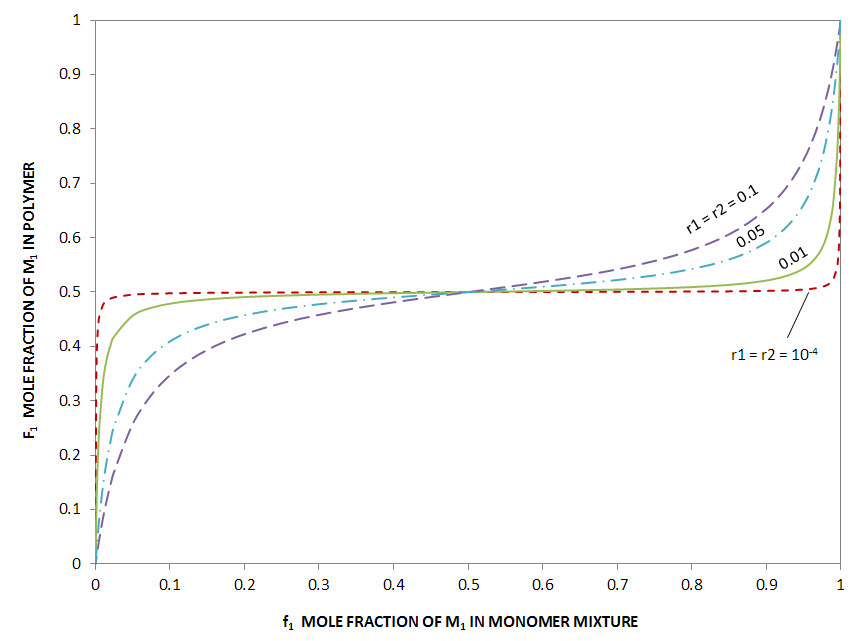Alternating Copolymerization
An alternating copolymer consists of two different repeat units that alternate in sequence in the polymer chain. A regularity in repetition of structural units is only possible if the two monomers M1 or M2 are unable to hompolymerize or have a strong preference to react with each other (quasi alternating copolymer). This is only the case if the reactivity ratios defined by
r1 = k11 / k12
r2 = k22 / k21
approach zero,
r1 = r2 ≈ 0,
where kxy are the reaction constants of the four different types of polymerization reactions:
M1* + M1 ≠> M1M1* R11 = k11 [M1*] [M1]
M1* + M2 => M2M1* R12 = k12 [M1*] [M2]
M2* + M2 ≠> M2M2* R22 = k22 [M2*] [M2]
M2* + M1 => M1M2* R21 = k21 [M2*·] [M1]
M1* and M2* represent chains terminating in a unit of type 1 and 2. In the case of a free radical polymerization, the radical bearing end groups react only with monomers of the other kind, i.e. M1· with M2 and M2· with M1.

For a quasi alternating copolymerization, the reactivity ratios are only approxiamtely but not exactly equal and zero. For obvious reasons, in a quasi alternating copolymerization of a 50/50 monomer blend, the two types of monomers will not be consumed with the same rate. Thus, with increasing degree of conversion, the monomer ratio [M1]/[M2] will deviate more and more from unity and the polymer structure will become less and less alternating.
Assuming chain termination and transfer reactions are absent or rare events, polymerization continues until one of the monomers is used up and then either stops (r1 ≈ r2 ≈ 0) or continues until both monomers are consumed (r1 ≈ r2 > 0).
Incremental Polymer Composition as a Function of Monomer Composition for Quasi Alternating Copolymerization

The figure above shows the incremental polymer composition as a function of monomer composition for different reactivity ratios. As the reactivity ratios r1 and r2 approach zero, there is an increasing tendency towards regularity in repetition of structural units.